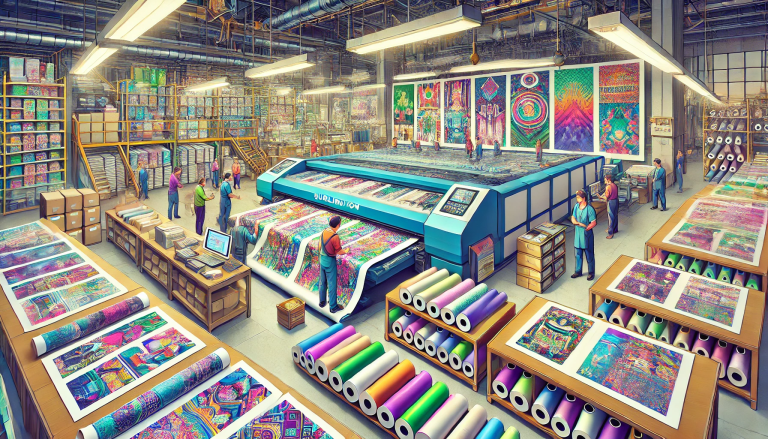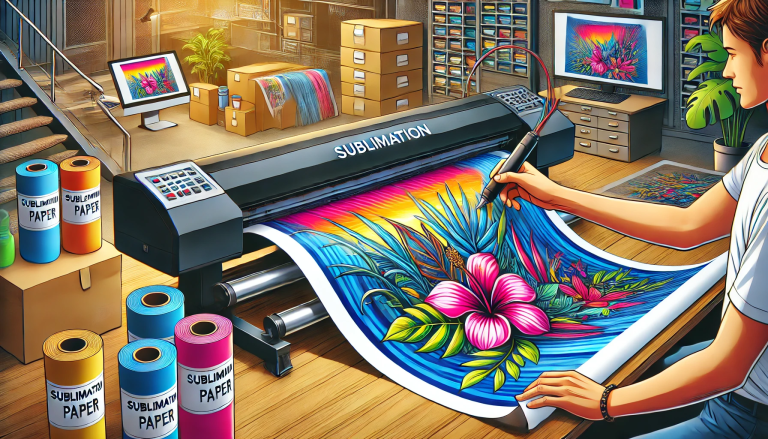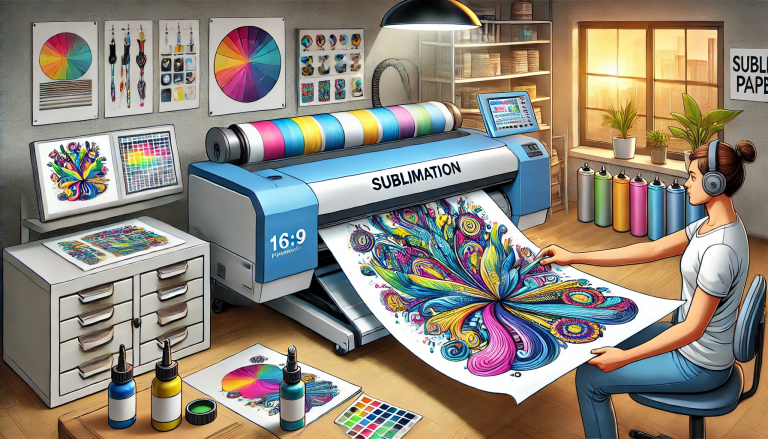“Transfer your designs to fabric with Digital Inkjet Sublimation Paper – the perfect way to make your creations come to life!” – SUBLIMATIONTRANSFERPAPER – Fast Dry Vinyl Sublimation Paper Wholesale, A4 Sublimation Heat Paper Factory, Made in China
Digital inkjet sublimation printing has revolutionized the world of textiles, offering vibrant, long-lasting colors and designs on fabrics. However, with so many types of printing papers available, it’s easy to get confused about which material is best for your needs. One common question among beginners and even experienced users is whether fabric transfer paper can be used as a substitute for digital inkjet sublimation paper. In this article, we’ll explore the differences between the two, their applications, and whether they can be used interchangeably.
Understanding Fabric Transfer Paper
Fabric transfer paper is a versatile material designed for transferring images or designs from paper to fabric using a heat press. It is commonly used for creating custom T-shirts, tote bags, and other textile items. The process involves printing your design on the transfer paper using an inkjet or laser printer, then applying heat and pressure to transfer the image onto the fabric.
Key characteristics of fabric transfer paper:
- Inkjet or laser compatibility: Depending on the type, fabric transfer paper can be used with both inkjet and laser printers.
- Heat transfer process: Requires a heat press to transfer the design onto the fabric.
- Limited wash durability: While transfer papers can produce vibrant designs, their durability in washing and wear may vary, often resulting in cracking or fading over time.
Understanding Digital Inkjet Sublimation Paper
Digital inkjet sublimation paper, on the other hand, is specifically designed for sublimation printing. Sublimation is a process where special sublimation inks are transferred onto a polymer-coated substrate using heat. The ink vaporizes (sublimates) and bonds with the fabric fibers, resulting in high-quality, full-color images that are resistant to fading and washing.
Key characteristics of digital inkjet sublimation paper:
- Sublimation ink compatibility: Sublimation paper is designed to work exclusively with sublimation inks.
- Heat activation: Requires a heat press to activate the sublimation process, causing the ink to bond with the fabric.
- High durability: Sublimation prints are known for their vibrant colors, long-lasting durability, and resistance to cracking or fading.
Can You Use Fabric Transfer Paper for Sublimation?
The short answer is no. Fabric transfer paper and digital inkjet sublimation paper serve different purposes and are not interchangeable. Here’s why:
- Ink Compatibility: Fabric transfer paper is designed for standard inkjet or laser inks, not sublimation inks. Using it with sublimation inks will not produce the desired results, as the transfer paper is not engineered to handle the heat and vaporization process required for sublimation.
- Transfer Process: Fabric transfer paper relies on the heat-transfer method, which involves peeling the paper away after heating to leave the design on the fabric. Sublimation, on the other hand, requires the paper to remain in place during the heating process, allowing the ink to vaporize and bond with the fabric.
- Durability and Quality: While fabric transfer paper can create designs on fabric, the results are often less durable and may crack or fade over time. Sublimation prints, in contrast, are designed to be long-lasting and vibrant, even after repeated washing.
Why It’s Important to Use the Right Paper
Using the wrong paper for your printing process can lead to several issues, including:
- Poor image quality
- Fading or cracking designs
- Wasted time, materials, and money
- Damage to your printer or heat press
For optimal results in sublimation printing, it’s crucial to invest in high-quality digital inkjet sublimation paper that is specifically designed for the process.
Conclusion
While fabric transfer paper and digital inkjet sublimation paper both play a role in customizing fabric, they are not interchangeable. Fabric transfer paper is ideal for conventional heat-transfer projects, while sublimation paper is essential for achieving the vibrant, durable results that sublimation printing offers. If you’re serious about sublimation printing, it’s important to use the right tools and materials to ensure the best possible outcome for your projects. By understanding the differences between these two types of paper, you can make informed decisions and achieve professional-quality results in your textile printing endeavors.




